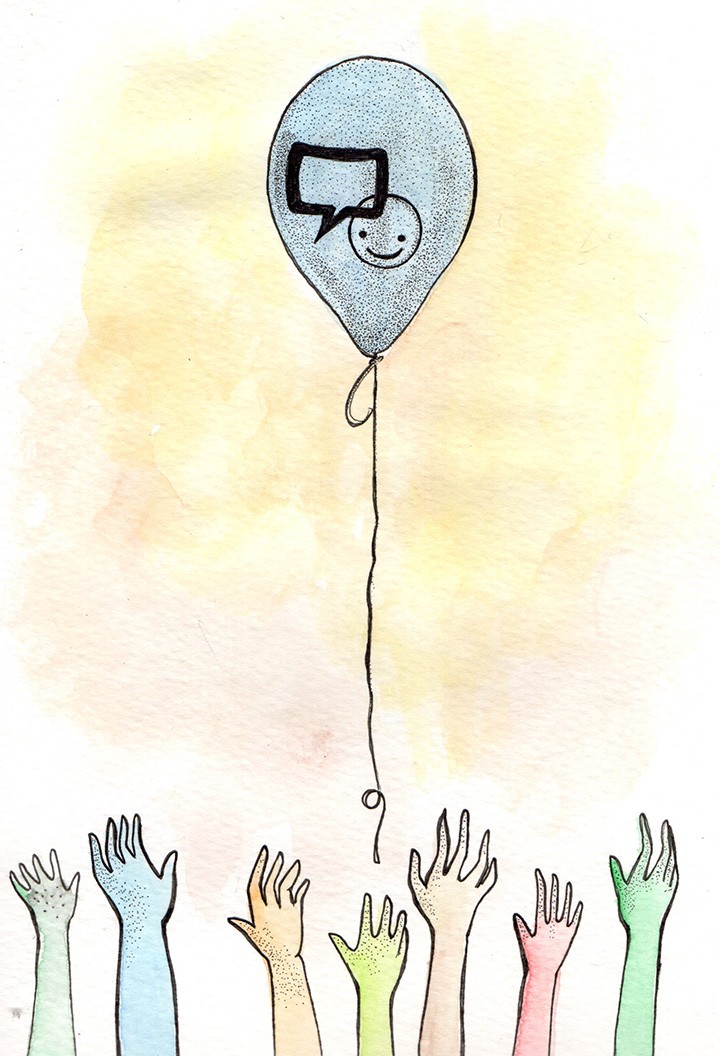Bell Let’s Talk overlooks poverty
Starting conversations doesn’t end discrimination

Illustrated by Gabrielle Funk
On Jan. 25, Canadians took to social media to declare their support for the de-stigmatization of mental illness as part of the annual Bell “Let’s Talk” Day. The company has pledged to donate five cents for each use of their hashtag, share of their campaign photo and text or phone call made on the Bell network.
Bell is one of several major corporations to join the conversation about mental illness in Canada, and “Let’s Talk” Day, which began in 2011, has donated $6 million through grants to hospitals, organizations and research institutes.
Though Bell is making a positive impact, the company’s efforts are far from perfect. Financial success aside, “Let’s Talk” tends to project a simplistic view of mental illness that isn’t always a reality.
According to their website, the “Let’s Talk” initiative is built on four main pillars, one of which involves combating the stigma associated with mental illness. However, by only focusing on anti-stigma, the campaign neglects the systemic discrimination those with mental illness often experience.
While stigma refers to the negative stereotypes a person or group of people receive, discrimination is the behaviour that results from the stereotype. Although both terms seem interchangeable, there are distinct differences that impact the way we view mental illness and its place in society.
When we talk about racism, sexism and homophobia, we call it what it is: discrimination. What makes prejudice against people with mental illness any different?
The Mental Health Commission of Canada says 20 per cent of Canada’s population, or roughly seven million people, live with mental illness.
According to the Canadian Mental Health Association Ontario Division’s website, people with mental illness are more likely to live in chronic poverty.
Canada Without Poverty estimates that people living with disabilities (both mental and physical) are twice as likely to live below the poverty line. This places the number of homeless individuals living with a disability or mental illness as high as 45 per cent of the overall homeless population.
These are only a few examples, and the numbers are startling - yet Bell continues to seemingly neglect discussing the systemic results of discrimination against those with mental illness.
Although Dexter Nyuurnibe, one of the campaign’s spokespeople, came close to homelessness, the majority of the “Let’s Talk” ambassadors are predominantly white and wealthy, and they have successful recovery stories. Perhaps Bell’s “Let’s Talk” projects the idea that mental illness is only acceptable to discuss once it has been overcome.
For Bell to further effect change, the company needs to direct its attention away from combatting stigma alone and hone in on the discrimination, particularly against those with intersecting identities.
Kelsey James is an aspiring journalist, writer and photographer currently in Red River College’s creative communications program.
Published in Volume 71, Number 17 of The Uniter (January 26, 2017)







